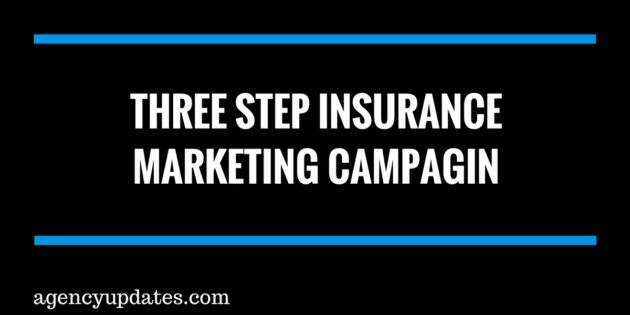Several years ago I started teaching insurance agents how to use basic insurance marketing campaigns to increase their quote volume each and every month. This is the stuff that will work time and time again, no matter how big (or small) your agency, if you’re captive or independent, or how competitive your rates are.
In this article, I’m going to break down the KEY components to generating these quotes. Take notes!
WHAT Are You Selling? (This is the product.)
When you first decide to create a campaign, you need to choose a product to focus on. I like to look at what is the most rate competitive or the easiest to close. This will vary depending on what kind of agency you have and what your sales goals are. You might even need to test several different products to see which get the best response.
WHO Do You Want To Buy? (This is your target market.)
Now you want to find the PERFECT client for this product. For example, when selling life insurance, you would probably target a married family with children. If you’re selling high risk auto insurance, you might target single men with multiple tickets. Or maybe you only write preferred auto for high credit clients.
The key here is to DEFINE who the perfect client is for the product you selected. The more specific, the better results you will have.
How will you gather these people up? For some of you, you’ll be able to run a list of current clients who fit certain parameters. Others might need to buy a marketing list. But you’ll need an easy way to reach these people, preferably by mail and phone. (Email is GREAT, but really only available for targeting current clients or those you’ve quoted in the past.)
WHAT Makes You The Right Choice? (This is your message.)
So why should this targeted person buy this particular product? How will it BENEFIT them?
Will they save money? Get a special discount? Can you offer a rate for a limited time? Do you specialize in insurance for this certain business owner or the person with multiple tickets? Nail down why you’re reaching out to them.
Once you have this information, you’re ready to design your campaign.
What is a marketing campaign?
A marketing campaign is when you hit a target market (in multiple ways) repeatedly with a specific message.
Usually I break this down into THREE steps.
Step #1 – Send a postcard.
This warms the prospect up and tells them what you have to offer or why you’re contacting them. It’s cheap to send a postcard and helps you avoid a cold call.
Step #2 – Make a phone call.
Here you’ll attempt to contact the client (as you promised in the post card). You’ll be trying to get the quote information in this step. If you don’t reach them, you’ll leave a voicemail asking them to call and offering to follow up via email (if you have their email address).
Step #3 – Follow up with an email.
Here you’ll reach out again by email. Some clients just don’t like the phone! This gives you an easy way to follow up without calling over and over again. You’ll remind them about the phone call message and ask for quote info again.
You’ll be sharing the SAME message in each step, reinforcing why you’re the right choice. (You can offer a special rate, a discount, they are missing something important, etc.) Remember, each step in your campaign has the same message and same goal.
BONUS STEP – Use A Facebook Ad
One of the awesome things about Facebook Ads, is that they can be targeted to a specific list of people. So you could upload your email address list and start showing an ad that matches the message you are sending via postcard, phone, and email. It’s just another way to keep reaching out to those prospects during your campaign.
Where Most Agents Go Wrong
Most agents only do one step. They send out thousands of postcards (to entire neighborhoods) and hope someone calls. Or they make random telemarketing calls without warming up the prospects first. (And get lots of hang ups.) Or they blast emails that don’t get much response.
But when you put all THREE together in a cohesive step-by-step sequence, you’ll begin to see results!
It doesn’t matter what the product is (auto insurance, life insurance, business insurance, etc). It just matters that you have a list of potential people who are a good fit for the product and that you give them a compelling reason to take action.
Got it? Try this technique today!
